Choosing between Catania and Palermo can be tricky for travelers heading to Sicily. These two vibrant cities offer unique experiences that showcase the best of Italian culture, history, and cuisine. While both have their charms, they differ in key ways that might sway your decision.
Palermo boasts more impressive historical sites and a lively street food scene, while Catania offers stunning views of Mount Etna and easier access to beautiful beaches. Palermo, the larger of the two, is known for its bustling markets and grand Norman architecture. On the other hand, Catania charms visitors with its Baroque buildings and proximity to natural wonders.
Your choice might depend on your interests. If you’re a history buff or food lover, Palermo might be your best bet.
But if you’re keen on outdoor adventures or want a mix of city life and beach relaxation, Catania could be the winner. Either way, you’re in for a treat in these Sicilian gems.
Key Takeaways
- Palermo offers richer historical sites and street food, while Catania provides volcano views and beach access.
- Catania is better for outdoor enthusiasts and Palermo for history and culture lovers.
- Both cities are great bases for exploring Sicily, with unique day trip options.
Geography and Climate
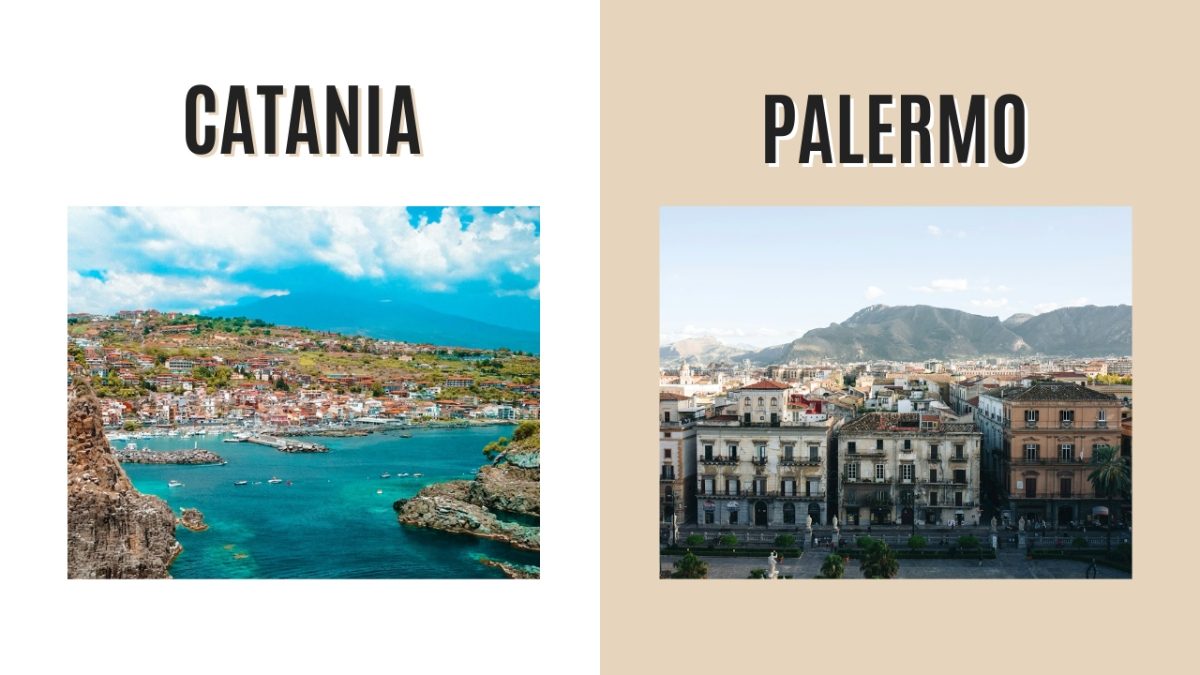
Catania and Palermo, Sicily’s two largest cities, offer distinct geographical features and climates. Catania sits near Mount Etna, while Palermo boasts beautiful beaches. Their weather patterns differ too, influencing when to visit each city.
Mount Etna
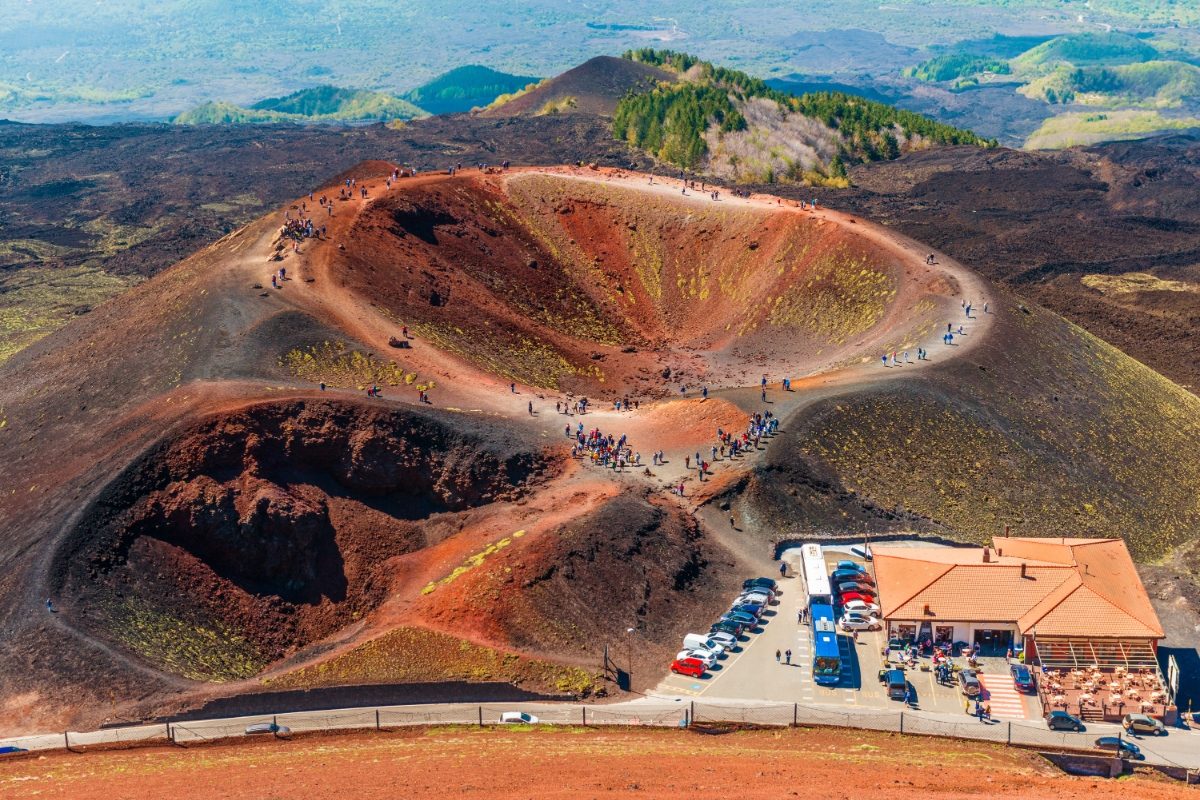
Catania’s skyline is dominated by Mount Etna, Europe’s tallest active volcano. This massive peak shapes the city’s landscape and culture. Etna’s slopes are lush vineyards and orchards, producing some of Sicily’s best wines and fruits.
Visitors can take cable cars or hike up Etna to see stunning views. The volcano’s frequent eruptions create an ever-changing terrain. Black lava fields contrast with green forests, making for dramatic scenery.
Etna’s presence affects Catania’s weather too. The mountain shields the city from strong winds and creates a unique microclimate.
Beaches

Palermo wins the beach battle,e hands down. Mondello Beach is a local favorite, just a short drive from the city center. Its white sand and clear blue waters are perfect for sunbathing and swimming.
Catania’s main beach, Playa di Catania, is a long stretch of golden sand. It’s nice but not as picturesque as Mondello, and the water can also be a bit rough here.
For the best beach experience, head to San Vito Lo Capo near Palermo. It’s about a 1.5-hour drive for the Caribbean-like waters and stunning cliffs.
Climate Comparison
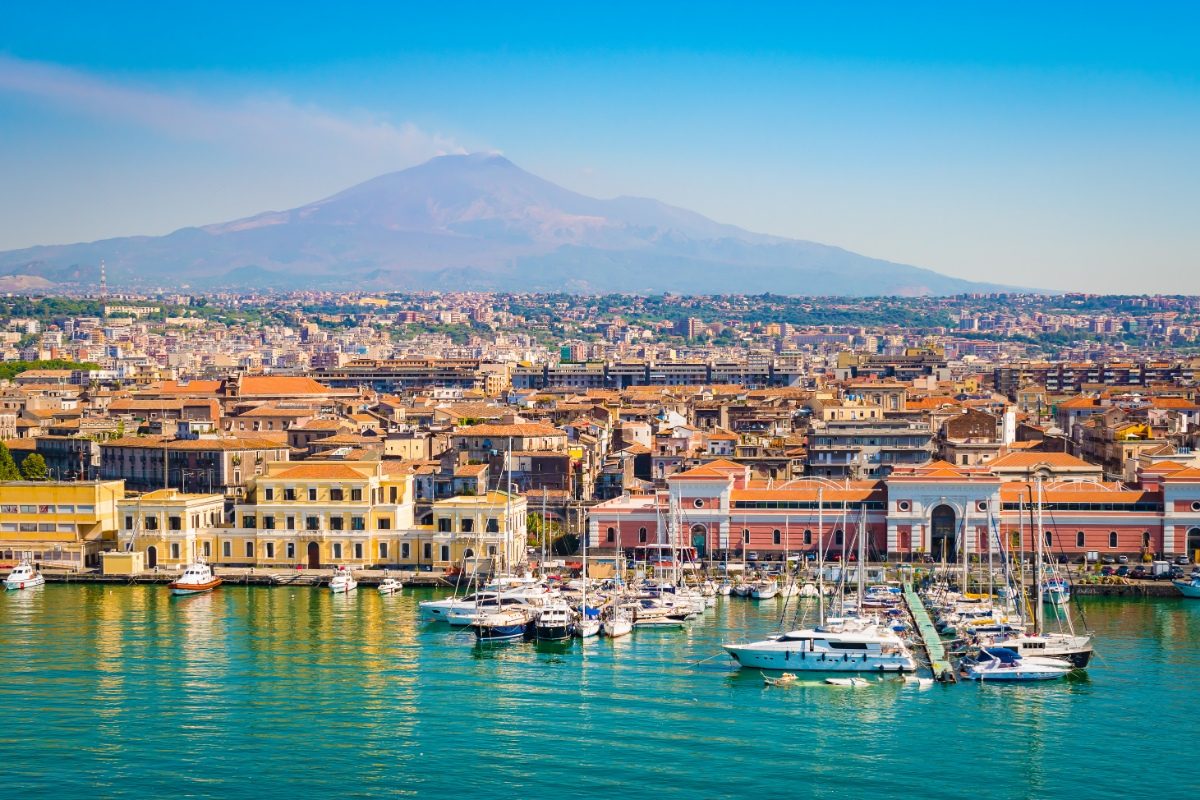
Both cities enjoy a Mediterranean climate, but there are some differences. Palermo is generally warmer and drier than Catania.
Catania’s summers are hot, often hitting 30°C (86°F). Winters are mild, rarely dropping below 10°C (50°F). The city gets more rain than Palermo, especially in fall and winter.
Palermo’s weather is more stable year-round. Summers are hot and dry, perfect for beach days. Winters are short and mild. The city sees less rainfall overall.
For the sunniest vacation, visit either city in July or August. But be ready for crowds and high prices during these peak months.
History and Culture

Catania and Palermo are both steeped in rich history and vibrant culture. These Sicilian cities showcase fascinating architectural heritage and important historical sites that reflect their unique past and blend of influences.
Architectural Heritage
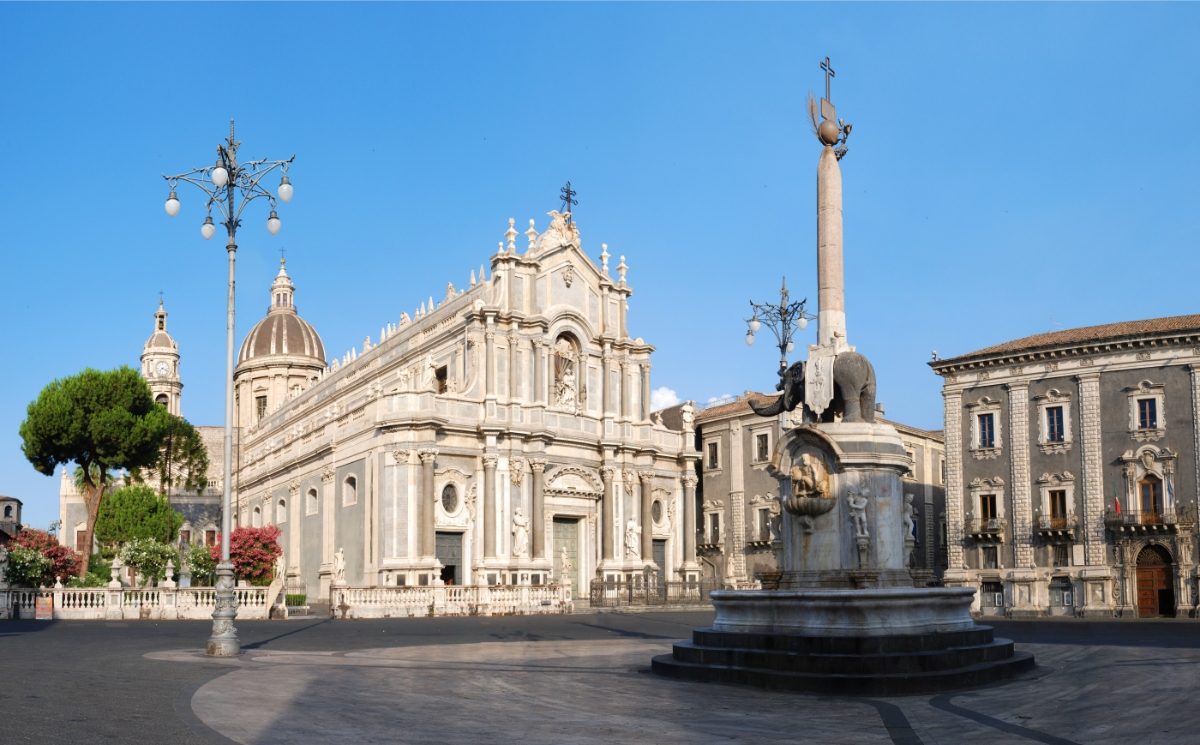
Catania’s architecture tells a story of resilience and rebirth. After a devastating earthquake in 1693, the city was rebuilt in a stunning Baroque style.
The result? A harmonious cityscape of elegant palazzos and churches made from dark volcanic stone. The Catania Cathedral, dedicated to Saint Agatha, is a prime example with its grand facade and ornate interior.
Palermo’s buildings, on the other hand, reflect its diverse history. The city’s architecture combines Norman, Gothic, Baroque, and Art Nouveau styles.
The Norman Palace, once home to the Kings of Sicily, is a testament to Palermo’s royal past. Its Palatine Chapel dazzles visitors with intricate Byzantine mosaics.
Historical Sites
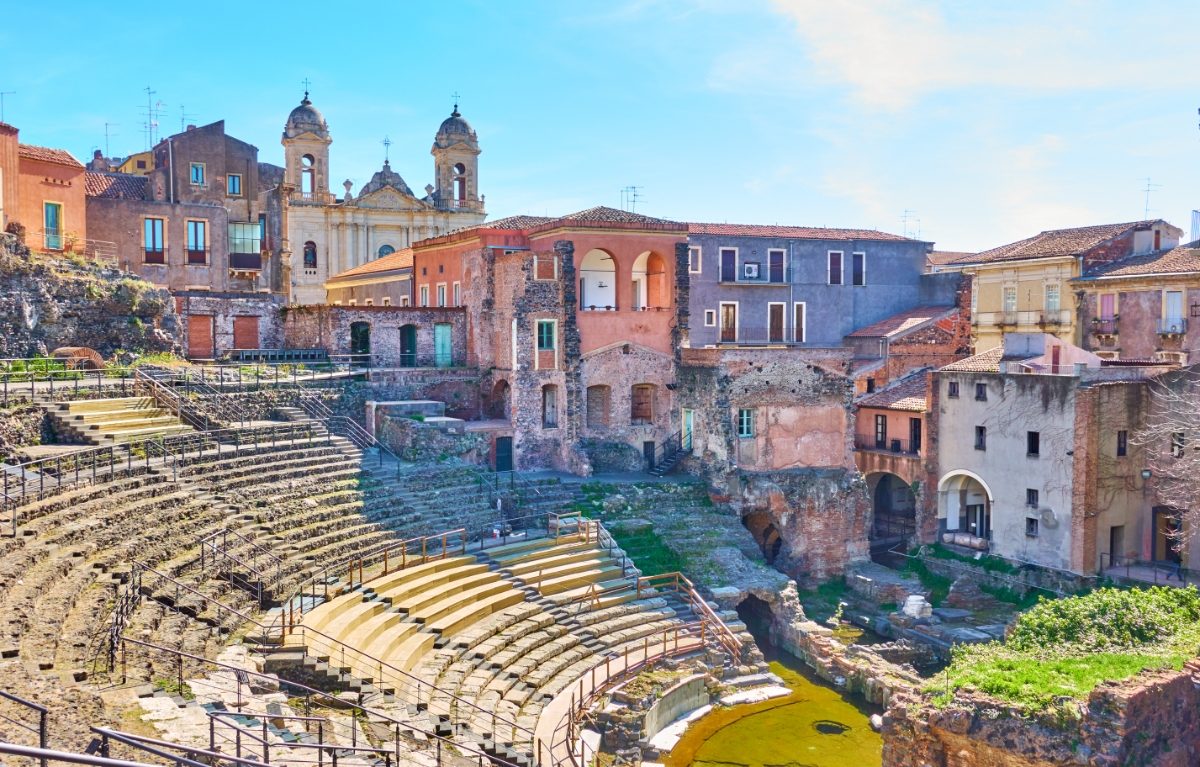
Catania boasts impressive ancient ruins. The Roman Amphitheater, buried for centuries, offers a glimpse into the city’s Roman past.
Nearby, the Greek Theater showcases the earlier Greek influence on the region. These sites transport visitors back in time, letting them walk in the footsteps of ancient civilizations.
Palermo’s historical sites are equally captivating. The Palermo Cathedral, with its mix of architectural styles, houses royal and imperial tombs.
The bustling markets of Ballarò and Vucciria, dating back to the 9th century, still pulse with life today. These vibrant spaces offer a taste of traditional Sicilian culture and cuisine.
Gastronomy
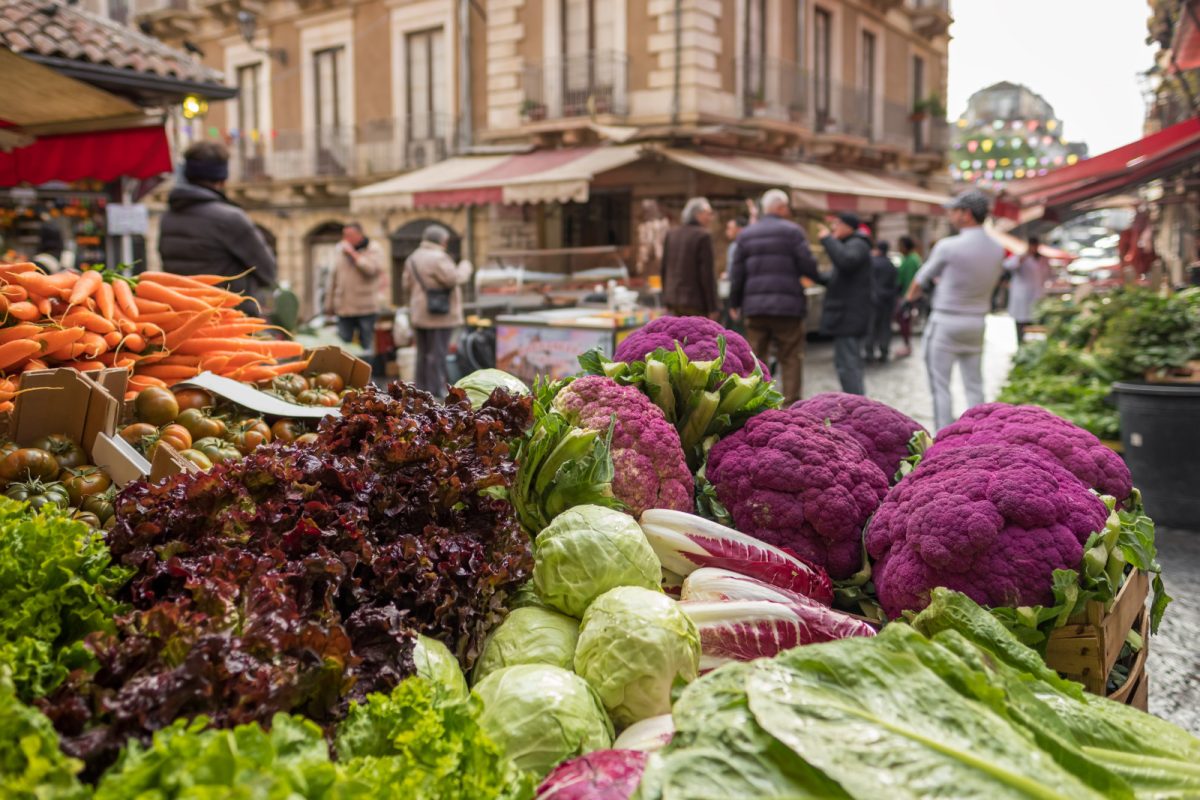
Catania and Palermo are famous for their mouthwatering Sicilian cuisine. Both cities offer a rich tapestry of flavors, from fresh seafood to sweet treats. Let’s explore the culinary delights that await in these two Sicilian gems.
Marketplaces
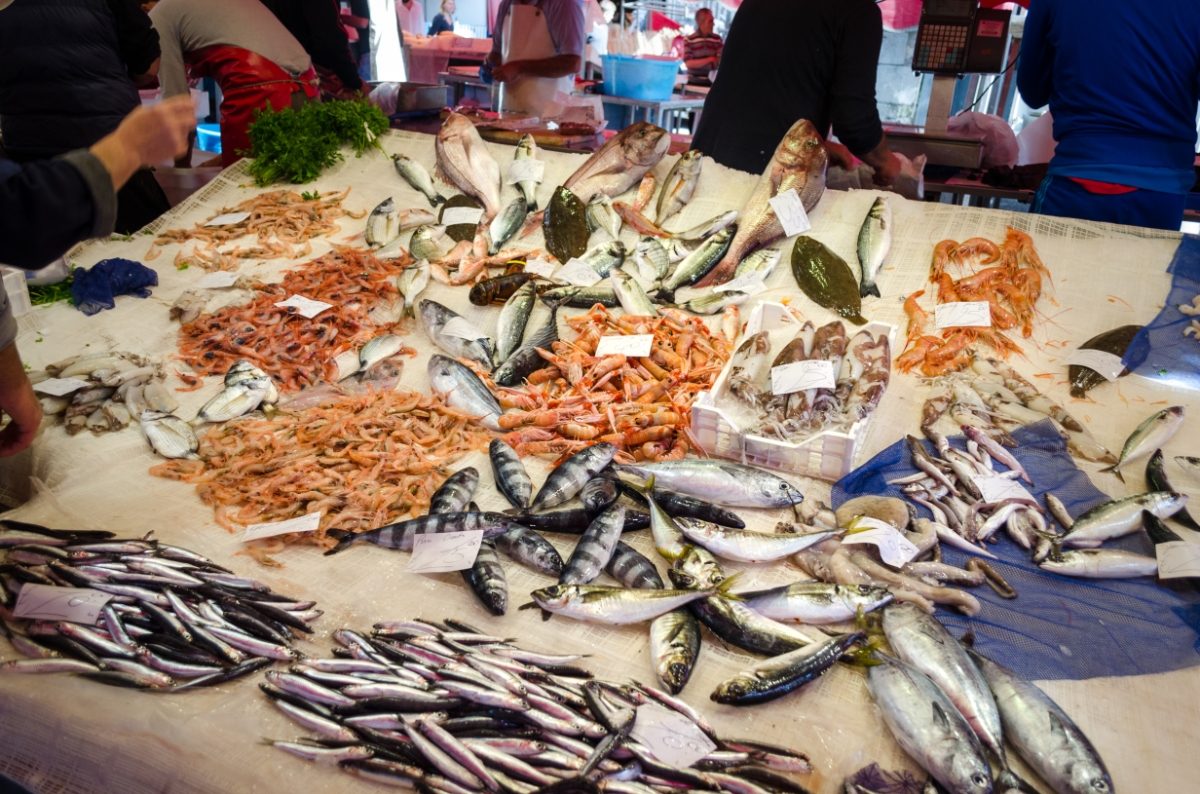
Catania’s La Pescheria fish market is a feast for the senses. The air is filled with the shouts of fishmongers and the briny scent of the sea. Visitors can find everything from swordfish to sardines, often at bargain prices.
Palermo’s Ballarò market is equally impressive. It’s a sprawling maze of stalls selling local produce, cheese, and meat.
The market is also famous for its street food. Foodies can sample arancini (rice balls) or panelle (chickpea fritters) as they browse.
Both markets are perfect for grabbing picnic supplies or ingredients for a home-cooked meal. They’re also great spots for people-watching and soaking up the local atmosphere.
Restaurant Scene
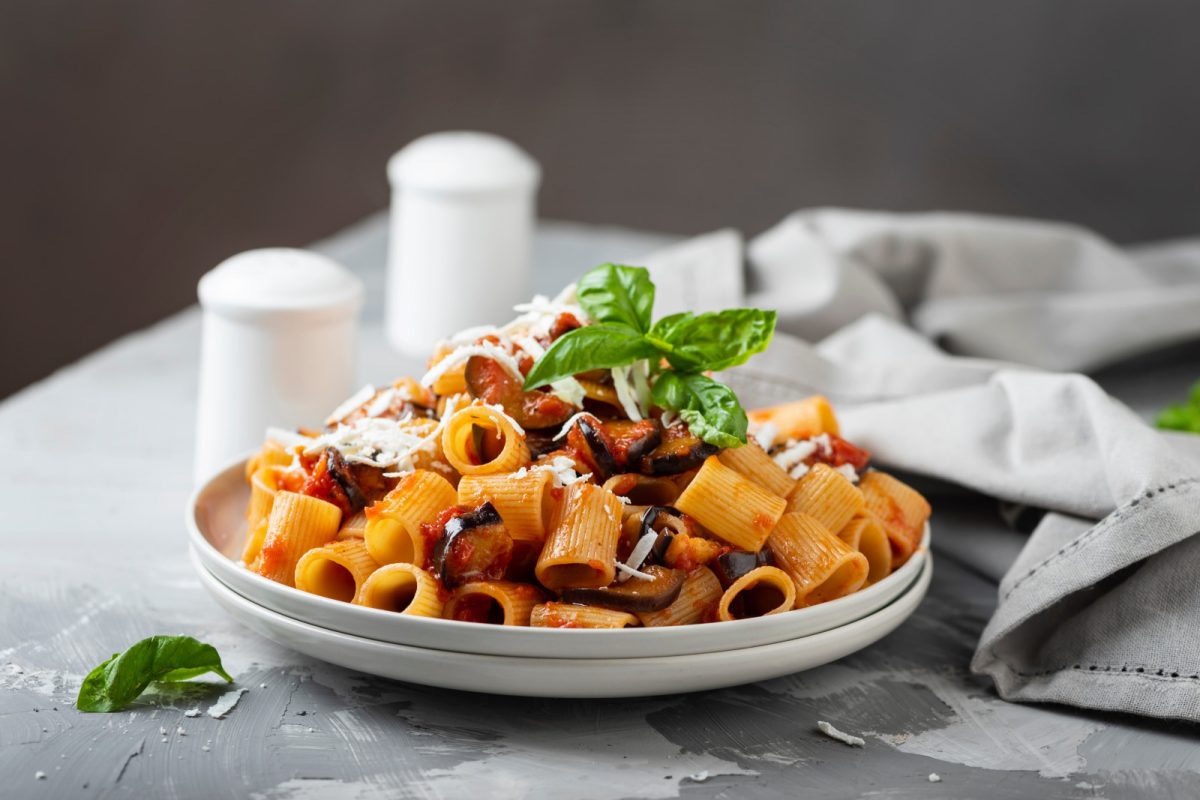
Catania’s restaurants often showcase the city’s proximity to Mount Etna. Many eateries use local ingredients grown in the volcano’s fertile soil. The city is known for its pasta alla Norma, made with eggplant, tomatoes, and ricotta salata.
Palermo’s dining scene is equally impressive. The city is famous for its seafood dishes, like pasta con le sarde (pasta with sardines). Many restaurants offer outdoor seating in charming piazzas.
Both cities offer a mix of high-end and budget-friendly options. Depending on the restaurant and dishes chosen, a meal for two can range from €30 to €100+.
Street Food
Catania’s street food scene is all about fish. Try the cartoccio di pesce, a paper cone filled with fried seafood. Another local favorite is cipollina, a savory pastry filled with onions, tomatoes, and cheese.
Palermo is often called the street food capital of Italy. Don’t miss the sfincione, a thick Sicilian pizza topped with tomatoes, onions, and anchovies. For the adventurous, there’s pani ca medusa—a spleen sandwich that’s tastier than it sounds!
Both cities offer food tours for visitors who want to sample a variety of street eats. Prices typically range from €50 to €80 per person.
Cultural and Recreational Activities
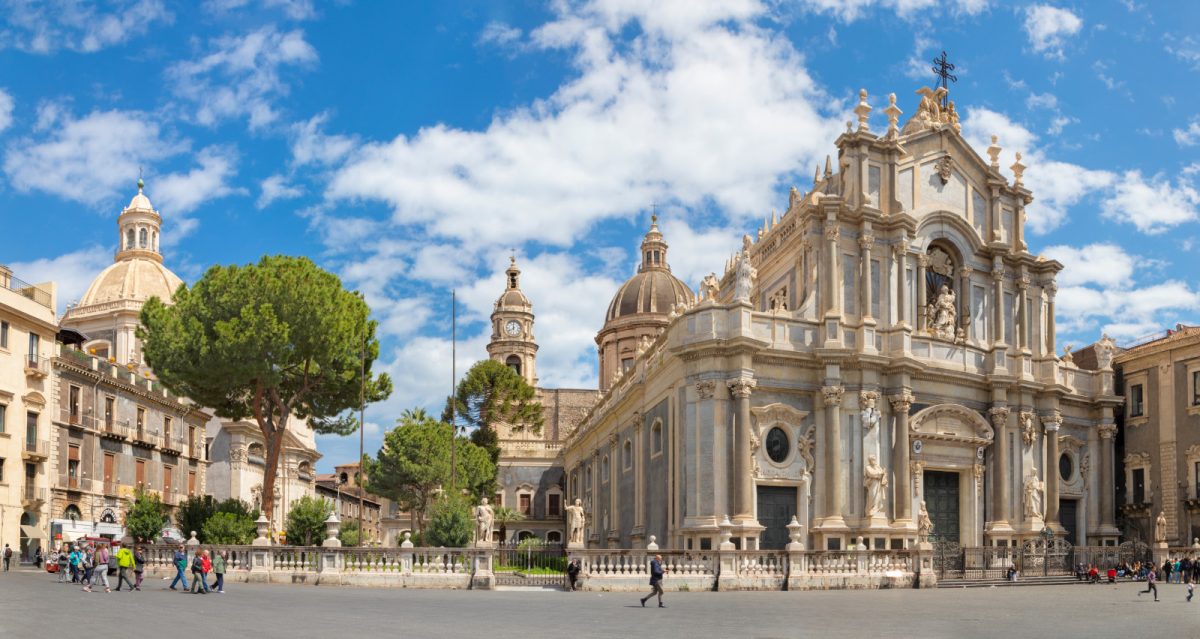
Catania and Palermo offer rich cultural experiences and diverse recreational options. Both cities boast vibrant nightlife, outdoor adventures, and great shopping. Let’s explore what each has to offer.
Nightlife
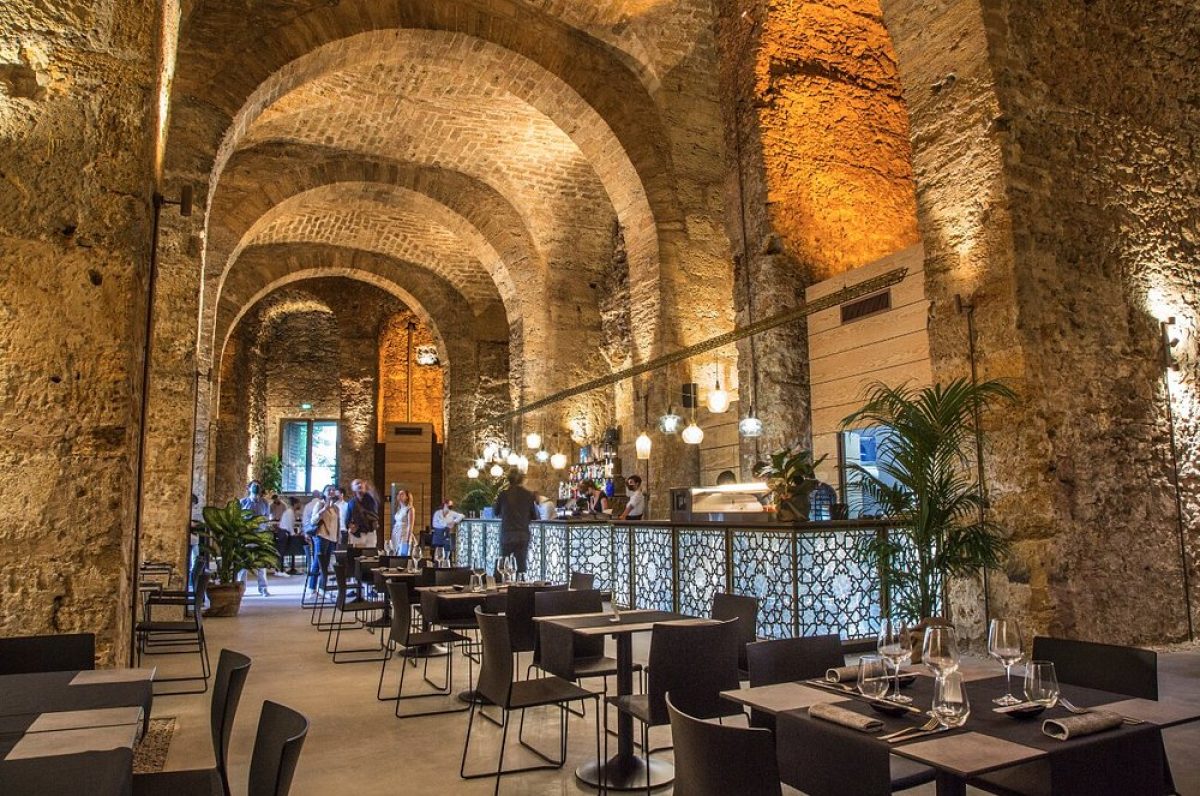
Catania’s nightlife centers around Via Crociferi and Via Etnea. These streets come alive after dark with bars, clubs, and pubs. Try La Chiave for craft cocktails or Mercati Generali for dancing. Prices range from €5-15 for drinks.
Palermo’s nightlife is just as lively. The Vucciria and La Kalsa neighborhoods are hotspots.
Kursaal Kalhesa is a popular spot for drinks and live music. Beer gardens like Tatum Art are perfect for warm evenings. Expect to pay €6-12 for cocktails.
Both cities have a mix of trendy bars and traditional taverns. Catania attracts a younger crowd, while Palermo has more variety for all ages.
Outdoor Activities
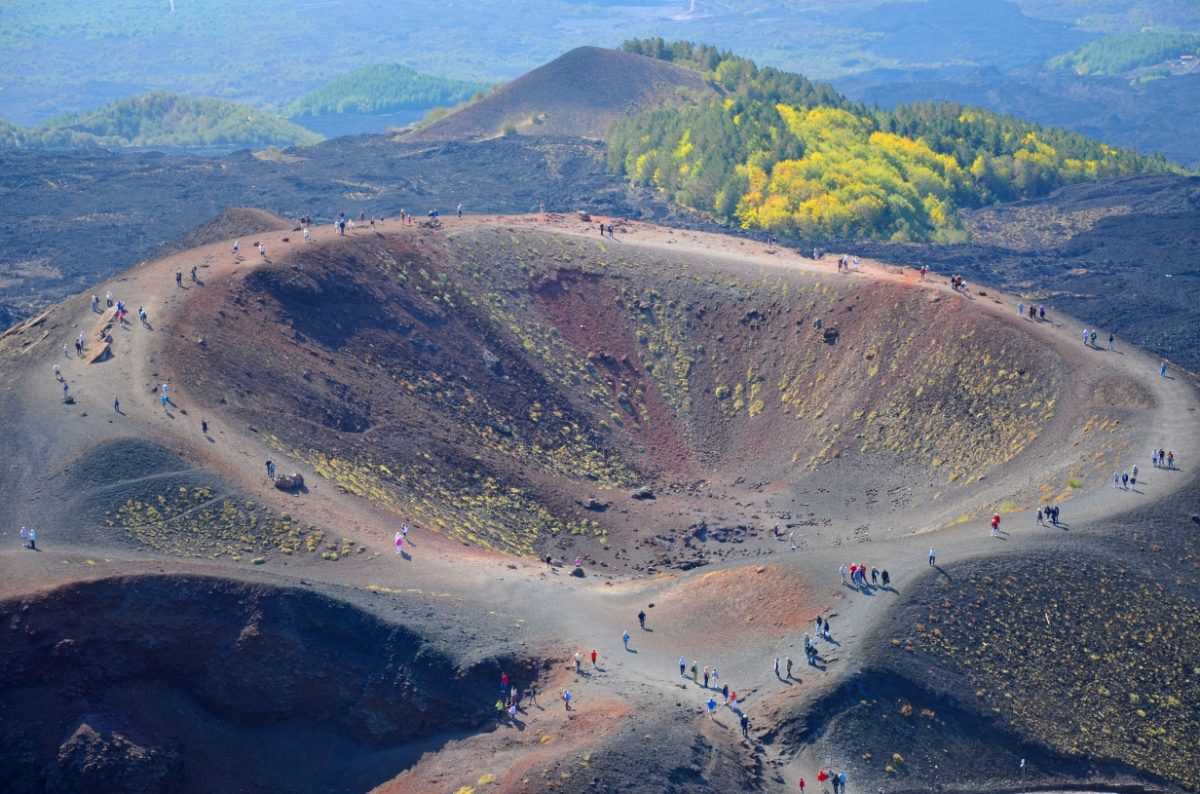
Catania’s main draw is Mount Etna. You can hike, bike, or take a cable car up Europe’s most active volcano.
Guided tours start at €65. The city’s beaches, like La Playa, offer swimming and sunbathing from May to October.
Palermo has beautiful Mediterranean beaches nearby. Mondello Beach is just 20 minutes from the city center. It’s great for swimming, windsurfing, and sunbathing. You can rent a beach chair for about €10 per day.
Both cities have parks for jogging or picnics. Try Villa Bellini in Catania or Giardino Inglese in Palermo for a green escape.
Shopping Hotspots
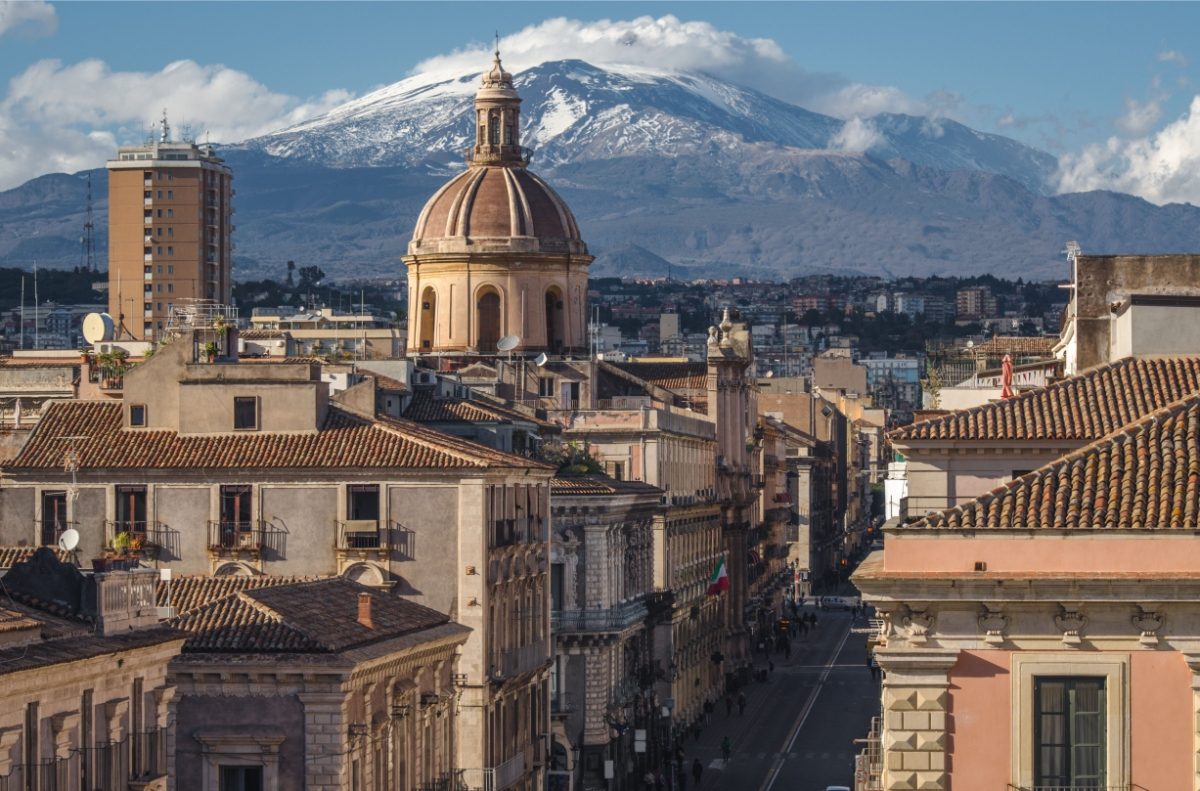
Catania’s main shopping area is Via Etnea. Here, you’ll find big brands and local boutiques. For unique gifts and local specialties, check out the fish market or La Pescheria.
The main shopping streets in Palermo are Via Libertà and Via Ruggero Settimo. The Ballaro market is great for local produce and street food. For high-end shopping, try Via Principe di Belmonte.
Both cities have shopping malls on the outskirts. But the real treasures are in the small, family-run shops in the historic centers. Look for handmade ceramics, Sicilian wines, and local fashion.
Accommodation and Accessibility
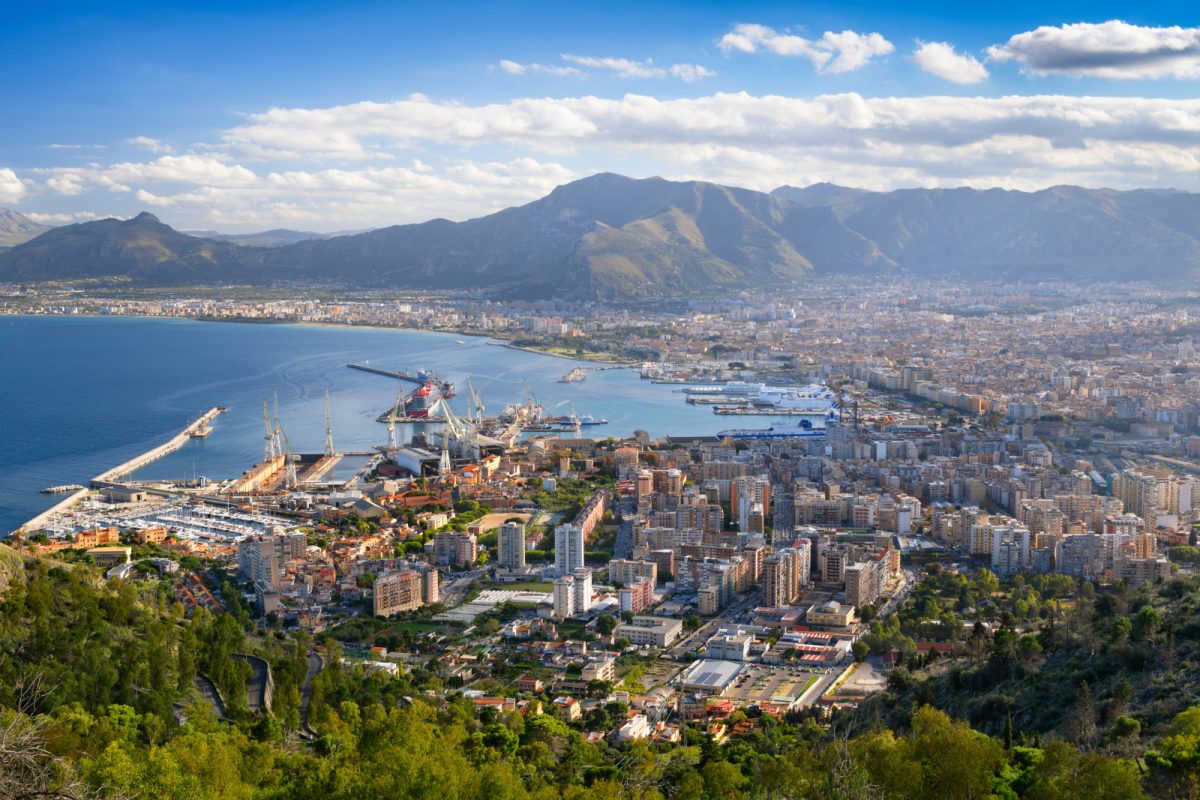
Catania and Palermo offer diverse lodging options and transport links for visitors. Both cities have their unique charm regarding places to stay and get around.
Hotels and Lodgings

Catania boasts a range of accommodations to suit different budgets. Charming boutique hotels in restored historic buildings are near the city center.
For a splurge, book a room with a view of Mount Etna. Budget travelers can opt for family-run guesthouses or hostels. Prices are lower than in Palermo, with decent double rooms starting around €60-80 per night.
Palermo has more upscale hotel choices, especially in the atmospheric old town. Many are housed in converted palazzos with ornate interiors.
Mid-range options cluster around the main shopping streets. Expect to pay €80-120 for a standard double. Rates can jump by 30-50% during summer, so book early if visiting in July or August.
Transportation Options
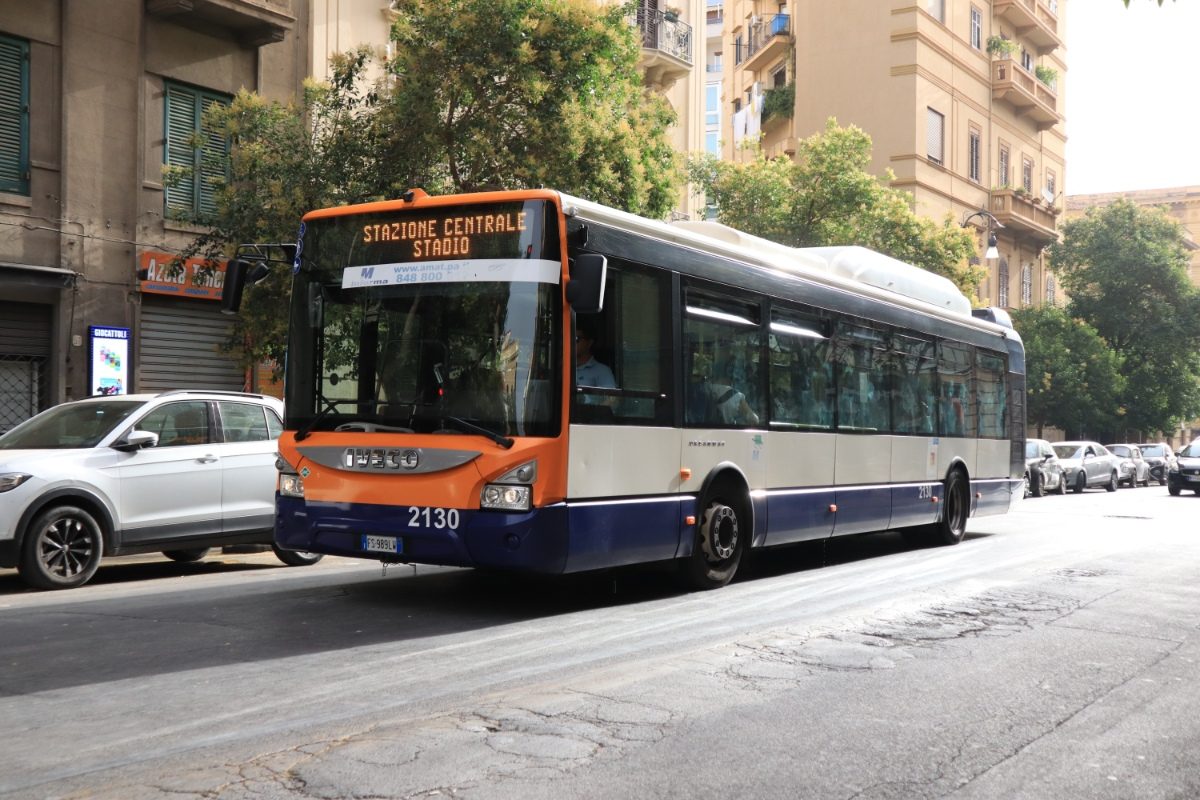
Getting around Catania is pretty straightforward. The compact city center is walkable, but buses connect major sights.
A single ticket costs €1.50 and is valid for 90 minutes. Taxis are pricier but convenient for airport transfers (about €25 flat rate).
Palermo has a more extensive public transport network, including buses and a limited metro system. A 24-hour ticket costs €5.50 and covers all modes.
The city can be chaotic, so many visitors prefer walking or taking taxis for short trips. The best Italy hotels often offer airport shuttle services, which can be stress-free.
Both cities have international airports. Catania-Fontanarossa Airport is just 4 miles from the city, while Palermo’s Falcone-Borsellino Airport is about 22 miles away, requiring a longer transfer.
Day Trips and Excursions
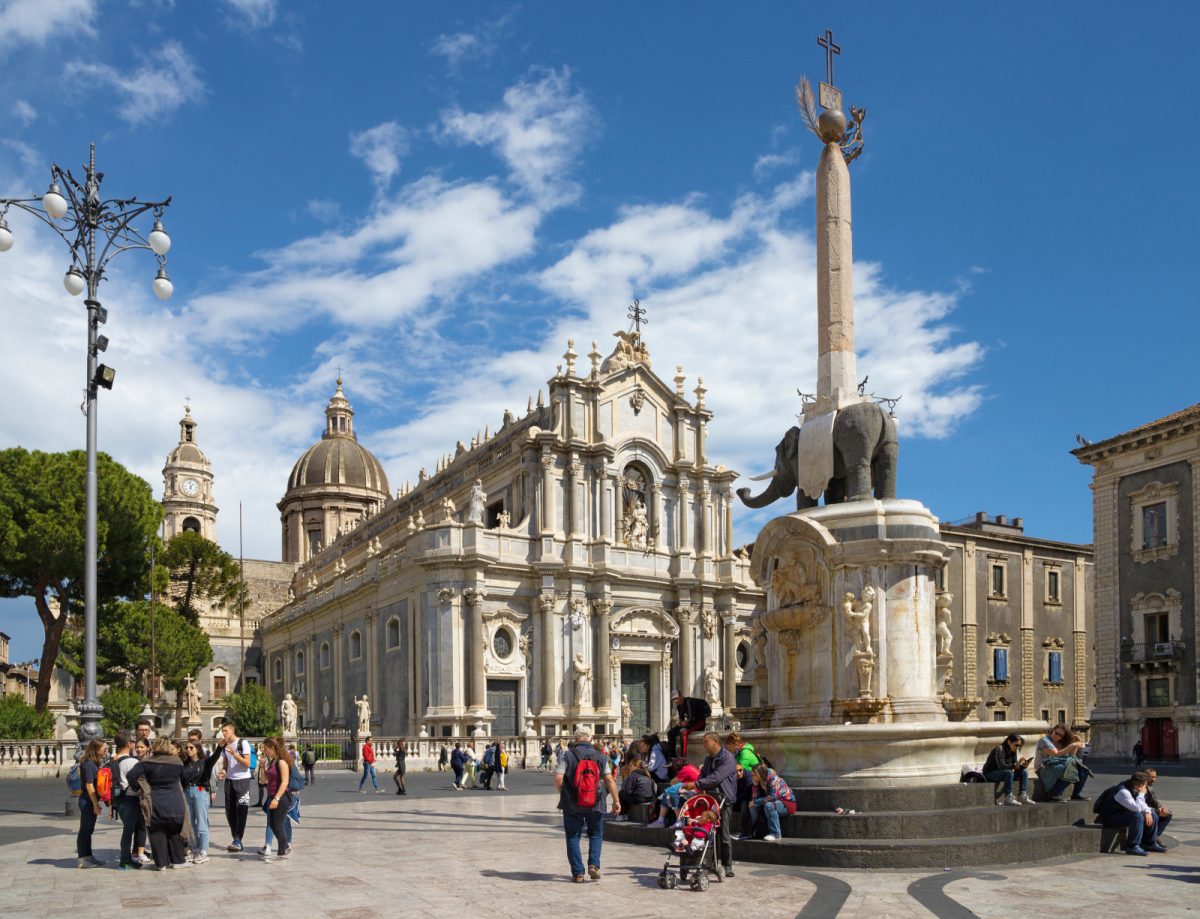
Both Catania and Palermo offer fantastic options for exploring Sicily’s treasures. From ancient ruins to stunning beaches, there’s no shortage of memorable day trips from either city.
From Catania
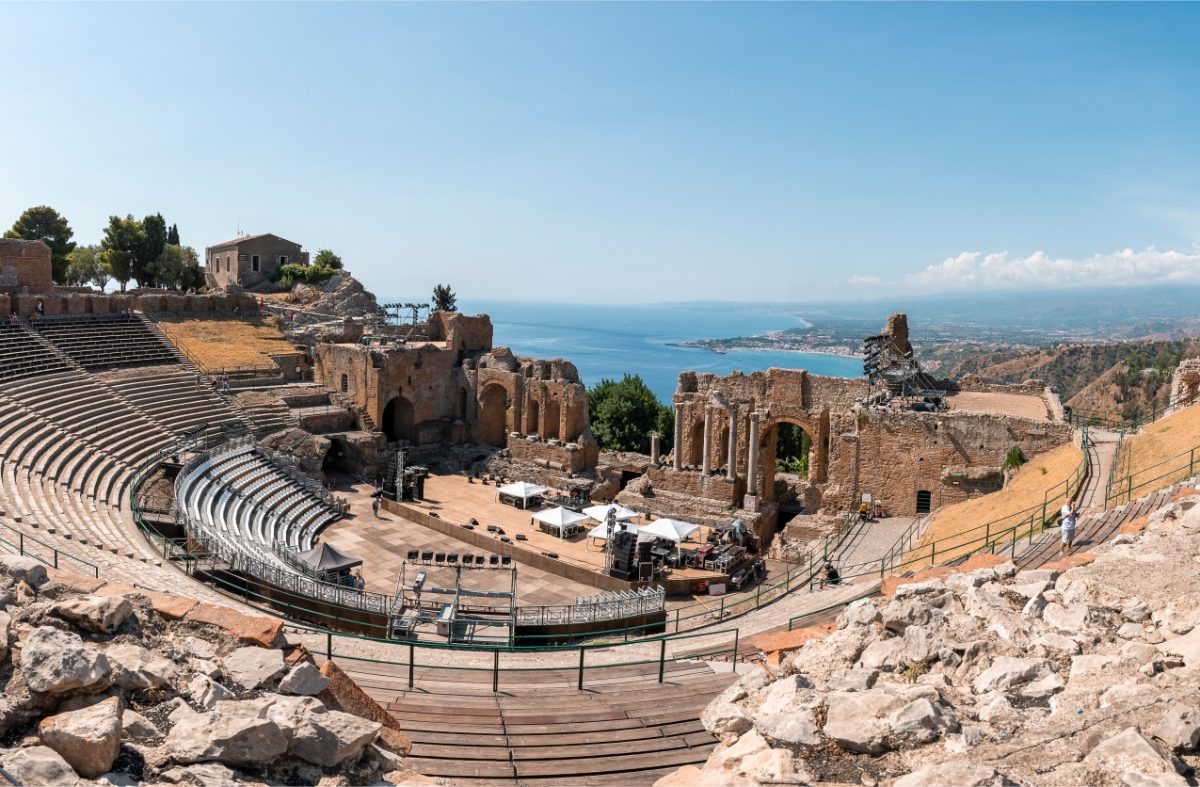
Mount Etna is a must-see from Catania. Europe’s tallest active volcano looms over the city, offering hiking and cable car rides with breathtaking views. Tours start at around €60 and include transport and a guide.
Taormina charms visitors with its Greek theater and clifftop views. Just an hour north by train, this picturesque town makes for an easy day out. Don’t miss gelato at Bam Bar – their almond flavor is divine!
History buffs will love Siracusa. Its archaeological park showcases Greek and Roman ruins, while Ortygia Island oozes old-world charm. Take an Italy tour to see the highlights in one day.
Beach lovers should head to Isola Bella. This tiny island near Taormina boasts crystal-clear waters perfect for swimming and snorkeling.
From Palermo
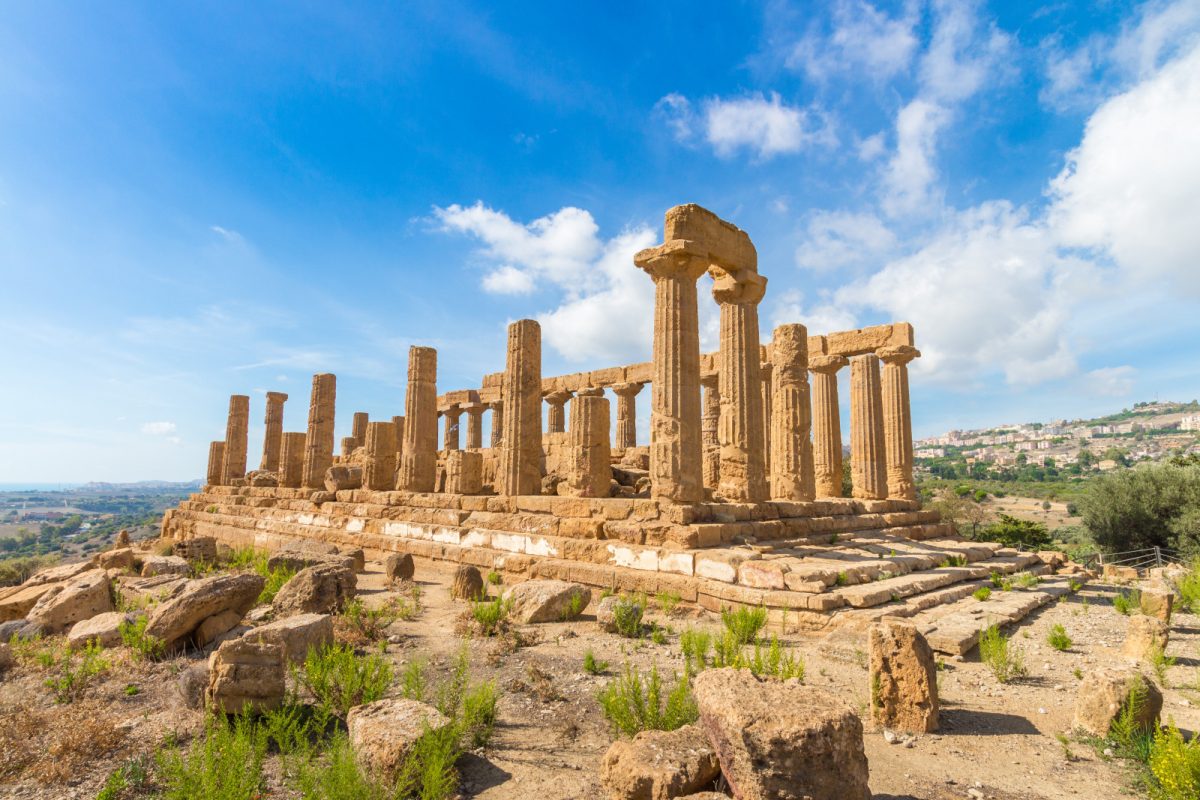
Cefalù‘s Norman cathedral and sandy beaches make it a popular escape from Palermo. Just an hour east by train, it’s ideal for combining culture and relaxation.
Monreale’s stunning cathedral is worth the short bus ride. Its Byzantine mosaics will leave you speechless. Go early to beat the crowds and enjoy the panoramic views of Palermo.
The Valley of the Temples in Agrigento showcases some of the best-preserved Greek ruins outside Greece. It’s a bit of a trek (2-3 hours by bus), but it’s worth it for history enthusiasts.
For a taste of local life, head to Mondello Beach. This lively resort town is just 20 minutes from Palermo by bus. Enjoy fresh seafood and people-watching along the promenade.
Beach Experience
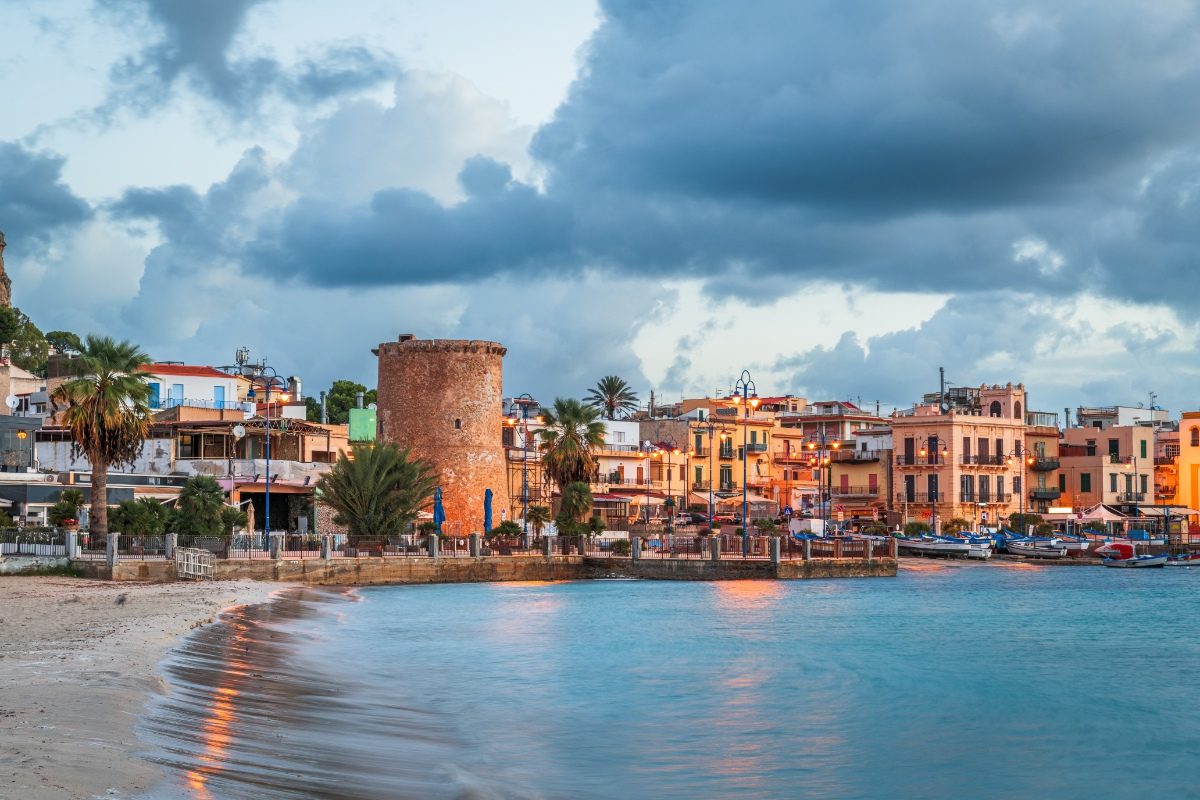
Sicily offers stunning coastal escapes for sun-seekers. Palermo and Catania provide access to beautiful Mediterranean beaches with unique charm.
Sandy Shores
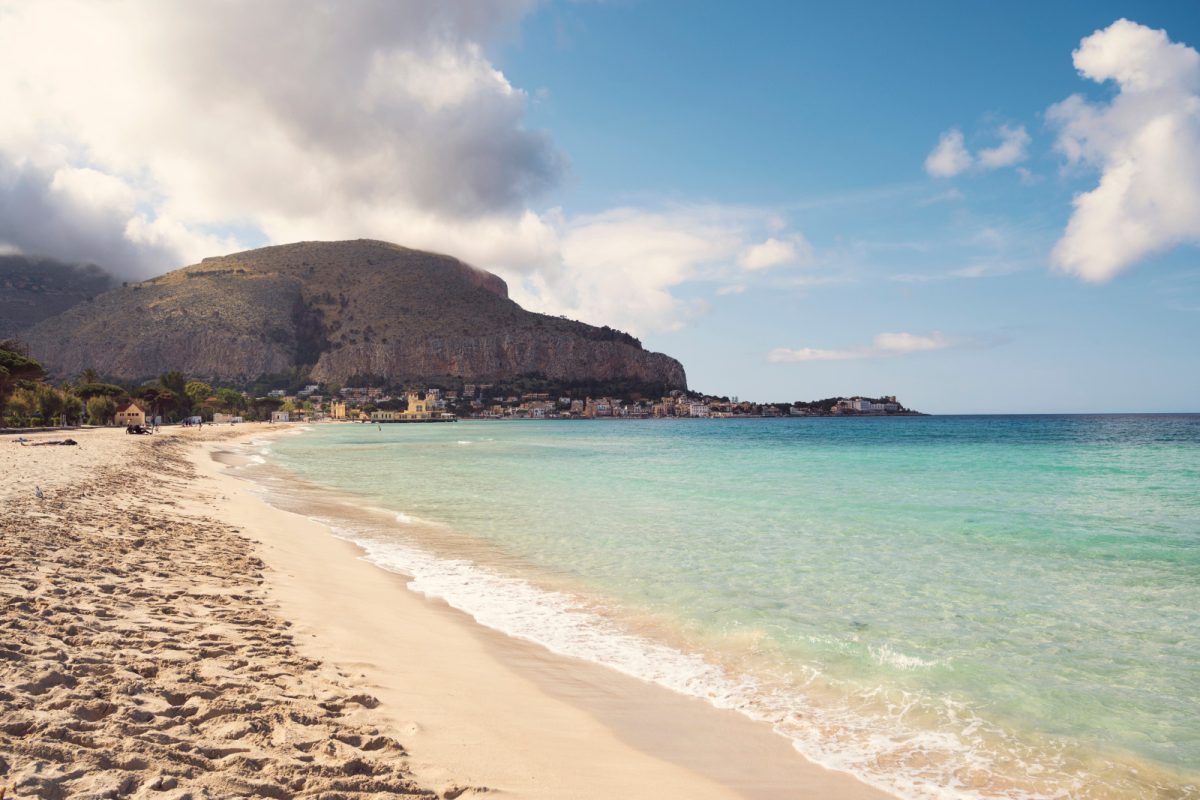
Palermo boasts some of Sicily’s most picturesque beaches. Mondello, a short drive from the city center, is a favorite among locals and tourists. Its pristine white sand and crystal-clear turquoise waters make it a perfect family spot. The beach gets crowded in summer, so arrive early to snag a good spot.
Catania’s main beach, Spiaggia di Catania, stretches several kilometers along the coast. It mixes sandy and pebbly areas with striking black volcanic sand in some spots. The beach can be quite busy, but it’s easy to find a quiet corner if you walk further from the main entrance.
Water Activities
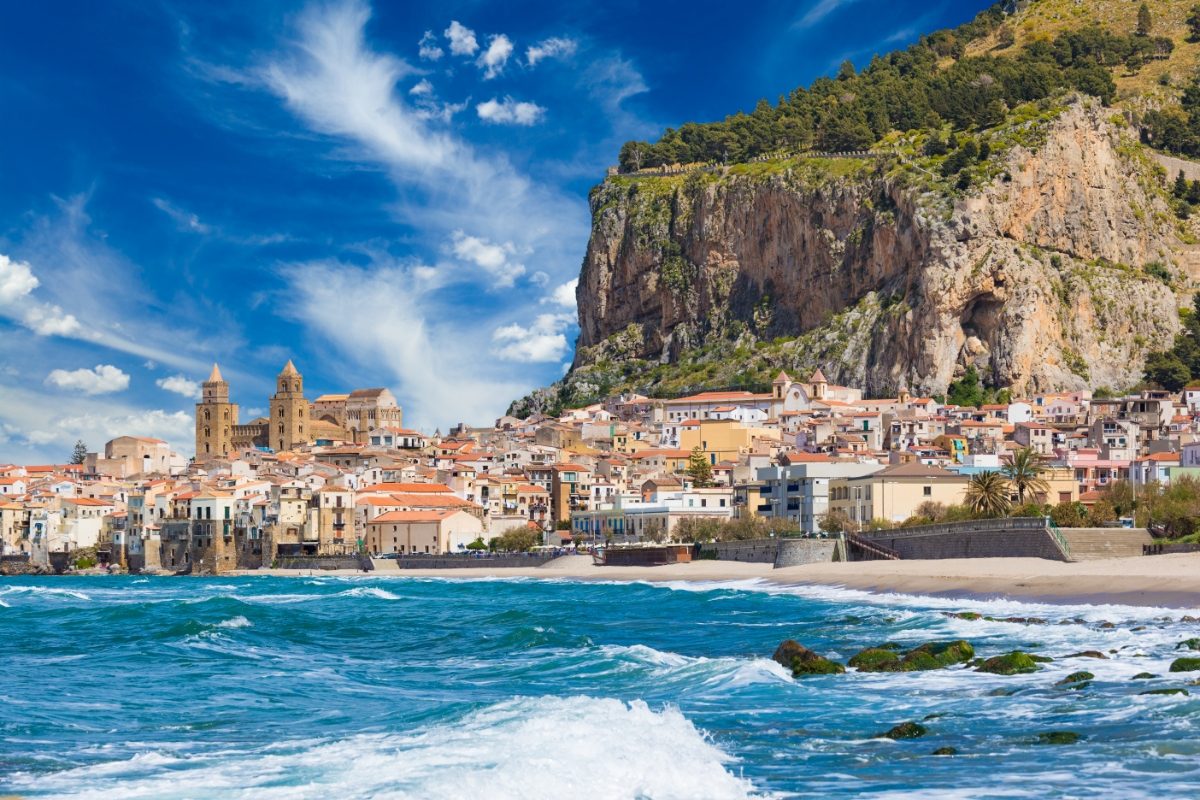
Both cities offer plenty of options for water enthusiasts. In Palermo, head to Cefalu for excellent snorkeling and scuba diving.
The clear waters reveal colorful fish and interesting rock formations. Many local operators offer guided tours for around €50-60.
Catania’s volcanic coastline creates unique underwater landscapes for diving. The protected marine area of Cyclops Islands is a must-visit for scuba fans.
Expect to pay about €80-100 for a dive trip. For a more relaxed experience, rent a paddleboard or kayak to explore the coastline at your own pace. Prices start from €15 per hour.
Budget and Travel Styles

Catania and Palermo offer different experiences for various budgets and travel styles. Both cities have options for budget-conscious travelers and those seeking more luxury.
Affordability
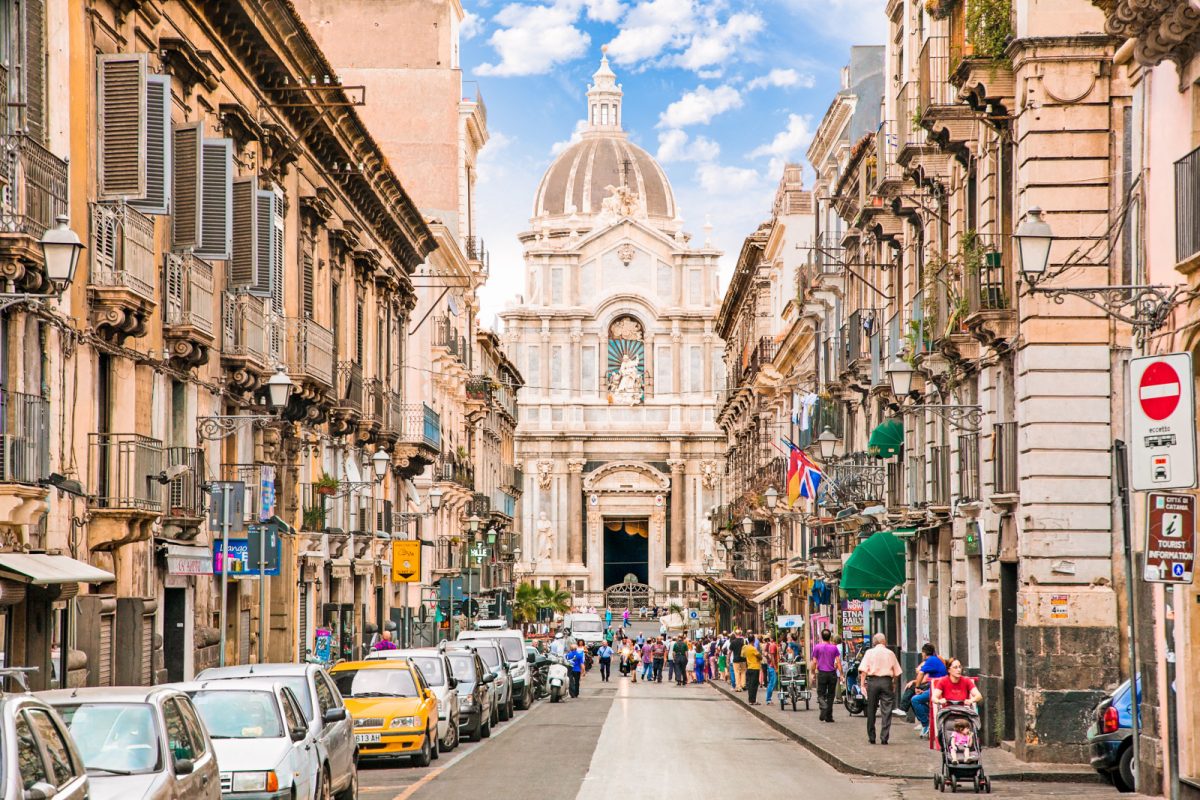
Catania and Palermo are pretty affordable compared to other Italian cities. You can find cheap eats in both places—a tasty arancini or slice of pizza for just €2-3. Hostels start around €15-20 per night, and mid-range hotels run €50-80.
Palermo tends to be a bit pricier, especially in the historic center. But bargains exist if you look. The markets are great for cheap, fresh food. Overall, Catania has more budget-friendly options.
Tip: Visit in the shoulder season (April-May or September-October) for lower prices and fewer crowds.
Traveler Preferences
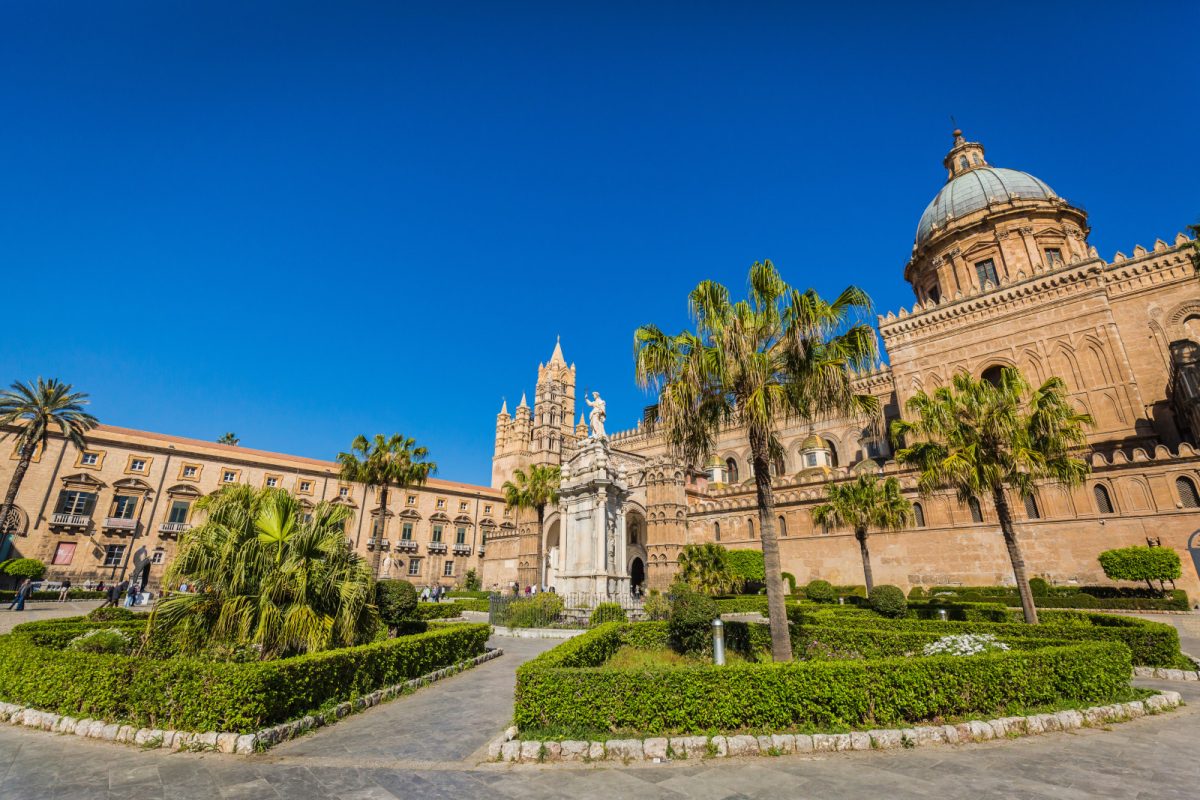
Backpackers love both cities for their gritty charm and wallet-friendly prices. Catania’s younger vibe and nightlife scene make it popular with solo travelers and groups of friends.
Palermo appeals more to history buffs and foodies. Its grand architecture and renowned street food draw culture vultures. Families enjoy Palermo’s beaches like Mondello.
Couples might prefer Catania’s romantic walks on Via Etnea. But Palermo’s intimate wine bars and cozy trattorias are perfect for date nights, too.
Both cities work for different travel styles. It comes down to personal taste. Beach lovers, pick Palermo. Hiking fans, go with Catania to explore Mount Etna.
Comparative Analysis
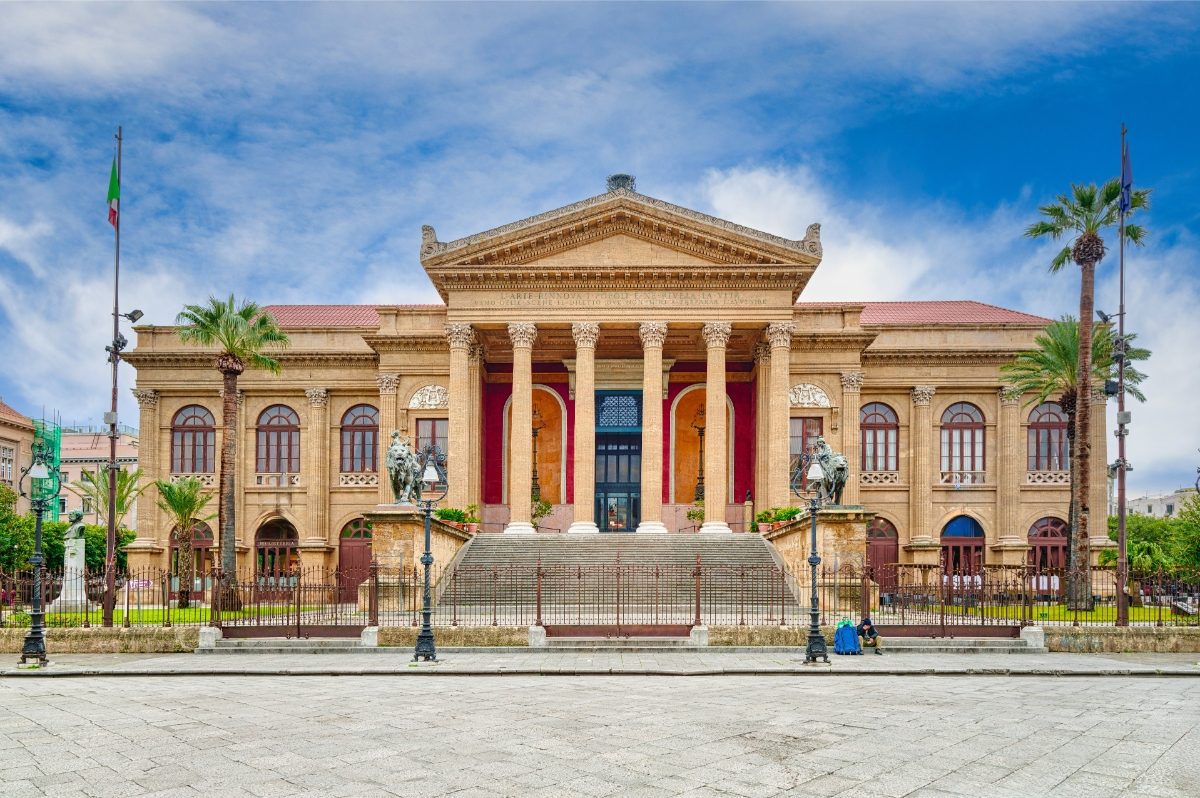
Catania and Palermo offer distinct urban experiences and travel opportunities. Each city has its own charm, attractions, and local flavor.
Urban Life
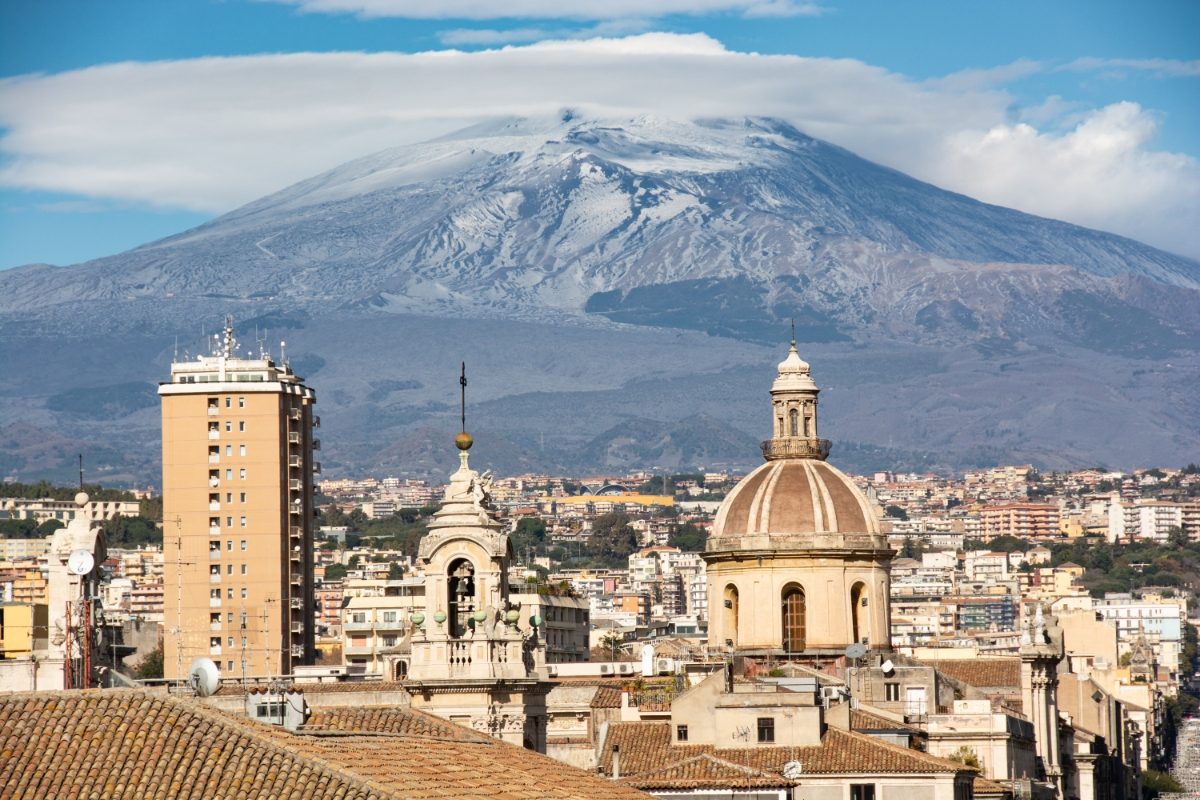
Catania pulses with energy at the foot of Mount Etna. Its streets buzz with scooters zipping past Baroque buildings. The fish market is lively, with vendors shouting and fresh catch glistening on ice. Nightlife centers around Via Etnea, where bars and clubs keep the party going till dawn.
Palermo has a grittier vibe. Its maze-like streets hide gems like Arab-Norman churches and bustling markets. The Vucciria market is a feast for the senses.
Street food reigns supreme here – try panelle (chickpea fritters) from a cart. Nightowls flock to the Kalsa district for its hip bars and live music.
Both cities have decent public transport. Catania’s metro is handy for getting around. Palermo relies more on buses, which can be crowded but cheap (€1.40 per ride).
Travel Experience

Catania wows visitors with its proximity to Mount Etna. Day trips to the volcano are a must. The city’s black lava stone buildings are unique. Don’t miss the elephant fountain in Piazza Duomo. For a beach day, head to La Playa.
Palermo dazzles with its mix of cultures. The Norman Palace and Cappella Palatina showcase stunning Byzantine mosaics.
Foodies shouldn’t skip the Ballarò market. Mondello Beach is just a short bus ride away for a seaside escape.
Shopping is better in Palermo. Via Libertà has high-end boutiques.
For local crafts, try the area around Quattro Canti. Catania’s main shopping drag is Via Etnea, which mostly has chain stores.
Both cities excel food-wise. Catania is famous for pasta alla Norma and arancini.
In Palermo, try sfincione (Sicilian pizza) and pasta con le sarde. Expect to pay €8-15 for a good meal in either city.
Frequently Asked Questions
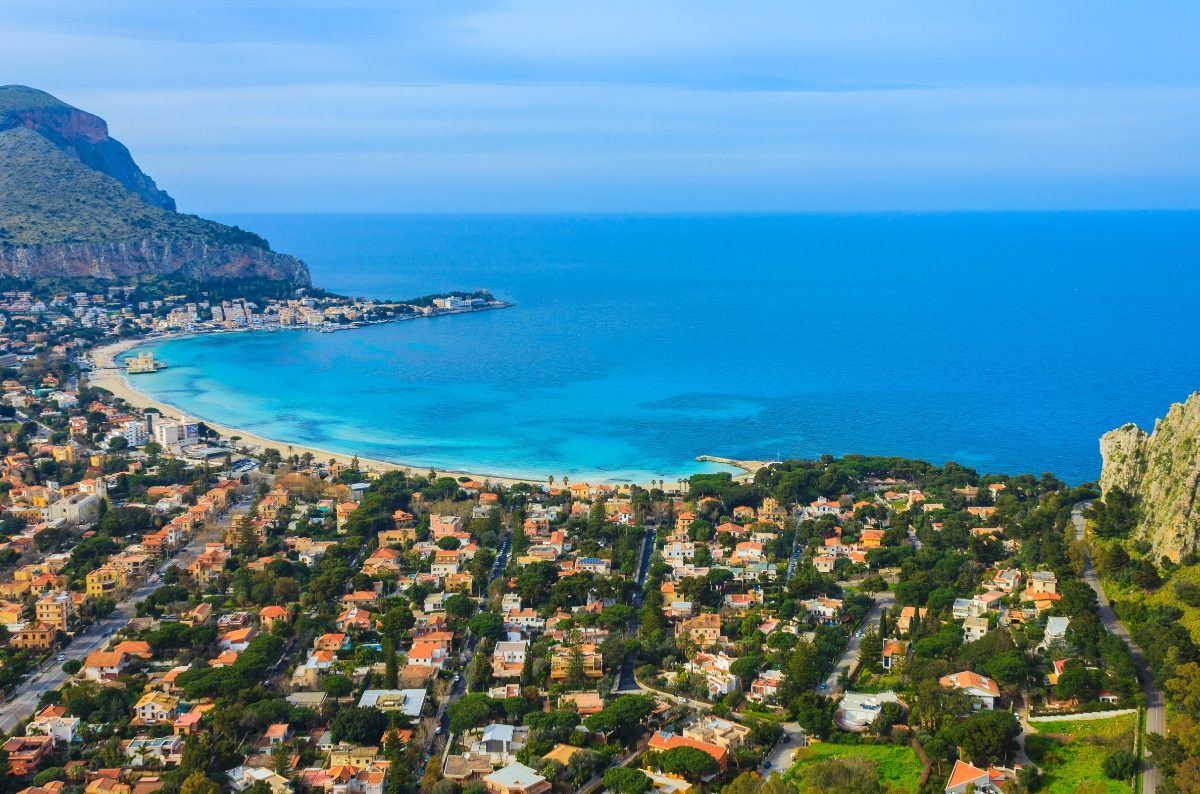
Catania and Palermo offer unique experiences for visitors to Sicily. Each city has charm, from vibrant nightlife to beautiful beaches and rich cultural heritage.
What are the distinctive features of nightlife in Catania compared to Palermo?
Catania’s nightlife is known for its youthful energy and university vibe. The city comes alive after dark with bustling bars and clubs around Piazza Teatro Massimo.
Palermo’s nightlife has a more laid-back feel.
You’ll find cozy wine bars and outdoor cafes in the historic center. The Vucciria market area is popular for late-night drinks and street food.
How do the beaches of Palermo stand out when compared to those in Catania?
Palermo’s beaches are wider and sandier than those in Catania. Mondello Beach, just 20 minutes from the city center, is a favorite spot with crystal-clear waters and a lively atmosphere.
Catania’s beaches are mostly pebbly or rocky. But they offer dramatic views of Mount Etna. La Playa, south of the city, is a long stretch of golden sand popular with locals.
Can you recommend the most scenic train route between Catania and Palermo?
The coastal route from Catania to Palermo is breathtaking. The train hugs the shoreline, offering stunning views of the Tyrrhenian Sea. You’ll pass through charming fishing villages and lemon groves.
The journey takes about 3 hours and costs around €14. For the best sea views, try to snag a seat on the left side of the train.
Which city boasts a more thrilling football rivalry, Palermo or Catania?
Palermo takes the crown for football passion. The fierce rivalry between Palermo F.C. and Catania is known as the “Sicilian Derby.” Matches between these teams are intense affairs with an electric atmosphere.
Catania’s football scene is less prominent but still has loyal fans. The city’s main team, Calcio Catania, plays in a lower division.
How do Catania and Palermo differ in terms of cultural attractions and historical significance?
Palermo shines with its Norman-Byzantine architecture. The stunning Palazzo dei Normanni and Cappella Palatina showcase the city’s royal past. The Teatro Massimo, Italy’s largest opera house, is a must-see.
Catania boasts impressive Baroque buildings rebuilt after a 17th-century earthquake. The city’s heart is the Piazza del Duomo, with its iconic elephant fountain. The Roman Amphitheater offers a glimpse into ancient times.
What are Sicily’s must-visit neighborhoods or areas for a truly authentic experience?
In Palermo, explore the maze-like streets of La Kalsa. This historic quarter is full of local life, with washing lines strung between balconies and kids playing football in piazzas.
Catania’s Fish Market, or La Pescheria, is a sensory delight. Watch locals haggle over the catch of the day and sample fresh seafood at nearby restaurants.
For a taste of rural Sicily, head to the hilltop town of Erice near Trapani. Its medieval streets and sweeping coastal views are unforgettable.

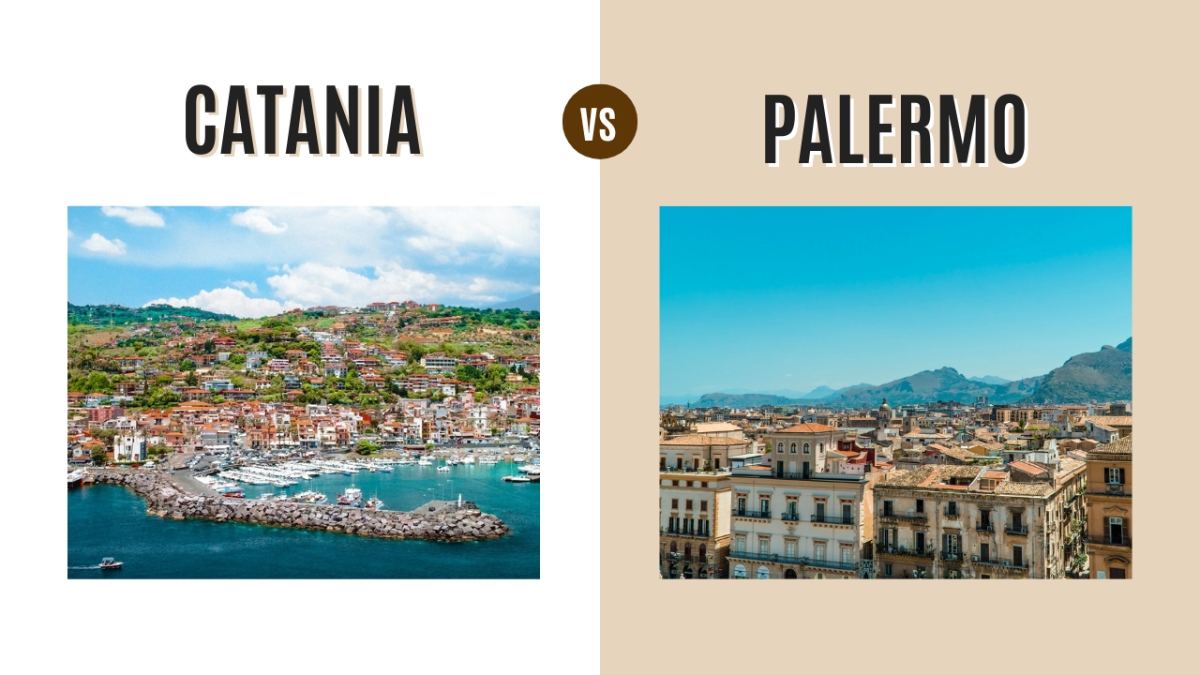
0 Comment